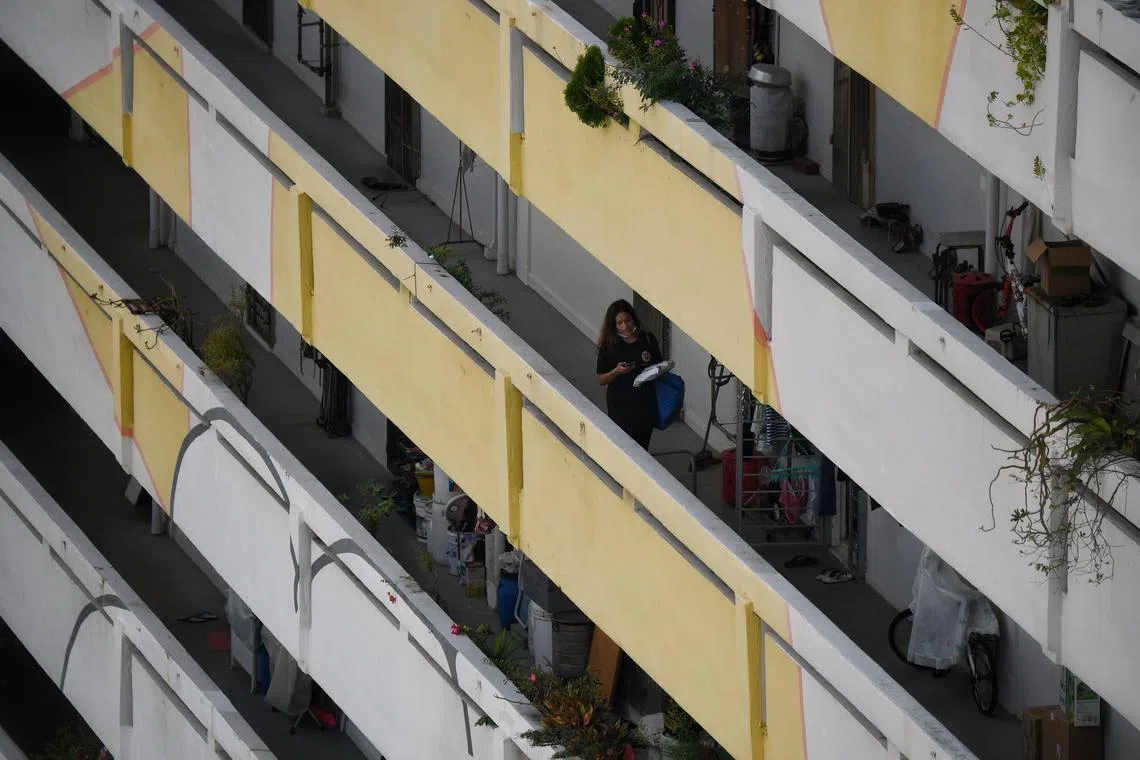Household incomes in S’pore rise in 2022 but inflation chips away at growth
Sign up now: Get ST's newsletters delivered to your inbox

Households across most income deciles saw increases in real average household income from work per household member.
ST FILE PHOTO
Follow topic:
SINGAPORE – Median household income grew in 2022 and income inequality fell compared with 2021, figures released by the Singapore Department of Statistics (SingStat) on Thursday showed.
Among resident employed households, monthly household income from work grew by 6.1 per cent in nominal terms, or before adjusting for inflation, from $9,520 in 2021 to $10,099 in 2022.
Median monthly household income from work rose 0.2 per cent in real terms, or after adjusting for inflation, in 2022. Household income from work includes employer Central Provident Fund contributions.
From 2017 to 2022, median monthly household income from work of resident employed households increased 2.9 per cent, or 0.6 per cent per annum in real terms.
Such households have at least one employed person, and the household reference person – previously referred to as the head of household – is a Singapore citizen or permanent resident.
Taking into account household size, median monthly household income from work per household member rose from $3,027 in 2021 to $3,287 in 2022, an increase of 8.6 per cent in nominal terms, or 2.6 per cent after adjusting for inflation.
From 2017 to 2022, median monthly household income per household member grew by 11.9 per cent cumulatively, or 2.3 per cent per annum in real terms.
Rise in income for all but top earners
Households across most income deciles saw increases in average household income from work per household member after adjusting for inflation.
In 2022, the average household income from work for each household member in resident employed households in all income groups rose in nominal terms, with the increases ranging from 5.3 per cent to 15.6 per cent.
After adjusting for inflation, households in the first nine deciles saw real income growth of 1.1 per cent to 10.1 per cent, while those in the top decile saw a real income decline of 1.3 per cent.
Between 2017 and 2022, the average household income from work for each household member in resident employed households in the first nine deciles rose 1.5 per cent to 3 per cent per annum in real terms, while that in the top decile recorded a decline of 0.4 per cent per annum in real terms. A decile is the one-tenth of all households arranged by their incomes from lowest to highest. The last, or 10th, decile is one-tenth of the households with the highest incomes.
The decline experienced by the top decile was because of a larger increase in household size from 2.26 in 2021 to 2.34 in 2022, compared with households in the other deciles. This, coupled with higher inflation experienced in 2022, contributed to the decline in their real household income in 2022.
Fall in household income inequality
The Gini coefficient based on household income from work per household member – before government transfers (assistance or benefits provided by the Government) and taxes – fell to 0.437 in 2022, from 0.444 in 2021.
The Gini coefficient is a measure of income inequality. A Gini coefficient of zero occurs when there is total income equality, and a coefficient of one means there is total inequality.
After adjusting for government transfers and taxes, the Gini coefficient in 2022 fell from 0.437 to 0.378. “This reflected the redistributive effect of government transfers and taxes,” said SingStat.
Nonetheless, this is still slightly higher than the Gini coefficient of 0.375 in 2020, which was the lowest on record.
Households received more government transfers
Resident households, including households with no employed person, received $5,765 per household member, on average, from government schemes in 2022.
This was higher than the $5,257 received in 2021, owing to the one-off and transitionary measures in 2022, as well as enhanced schemes, to cushion the impact of the goods and services tax rate increase and higher inflation on cost of living, said SingStat.

Resident households, including households with no employed person, received $5,765 per household member on average from Government schemes in 2022.
ST PHOTO: KUA CHEE SIONG
Resident households living in one- and two-room Housing Board flats continued to receive the most government transfers. In 2022, they received $12,189 per household member, on average, from government schemes, close to double the amount received by resident households living in HDB three-room flats.
The report, Key Household Income Trends, 2022, is available on SingStat’s website.


